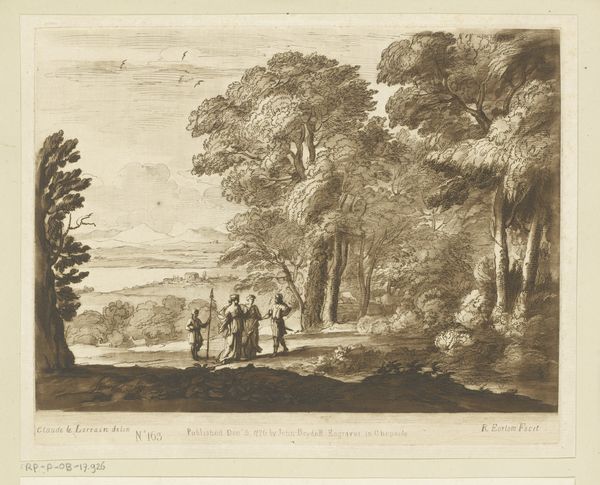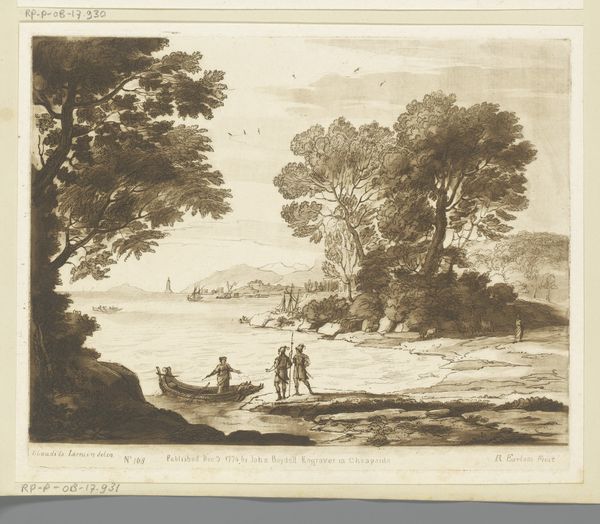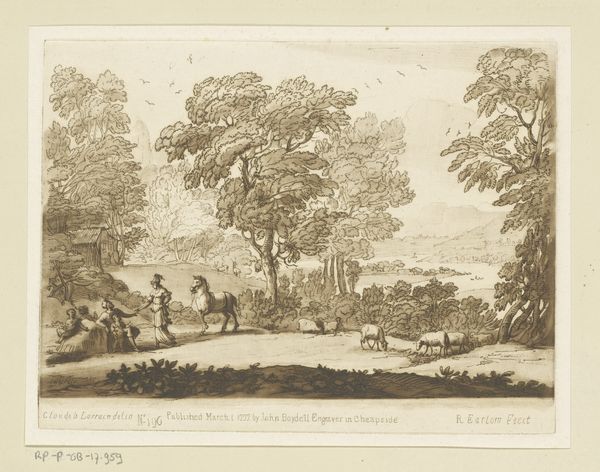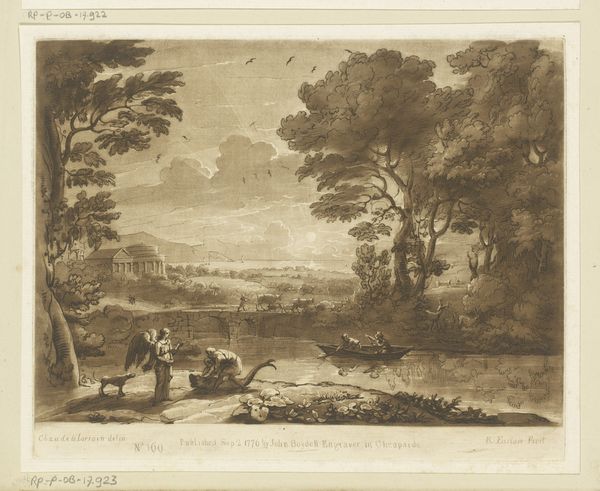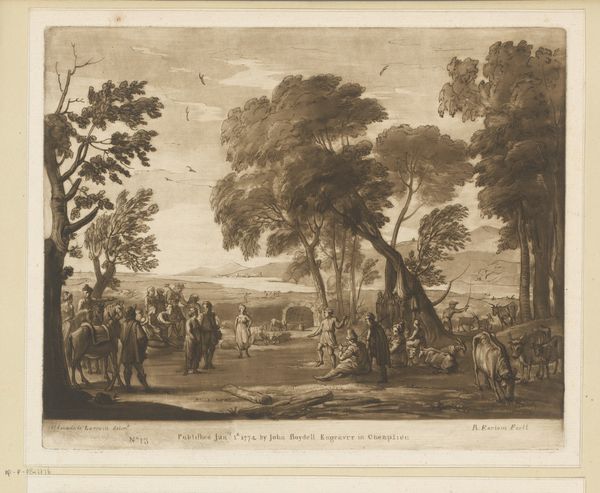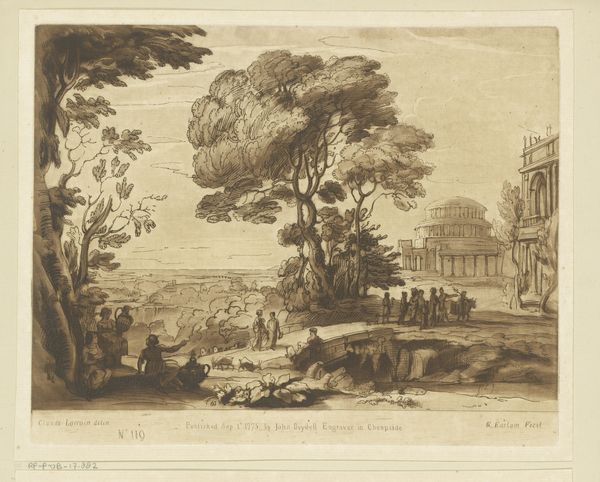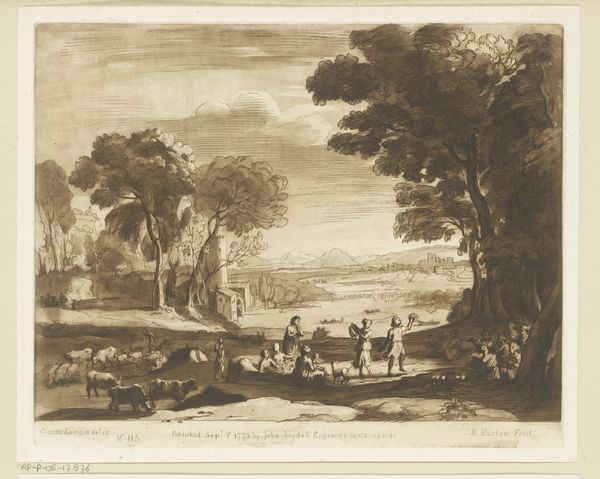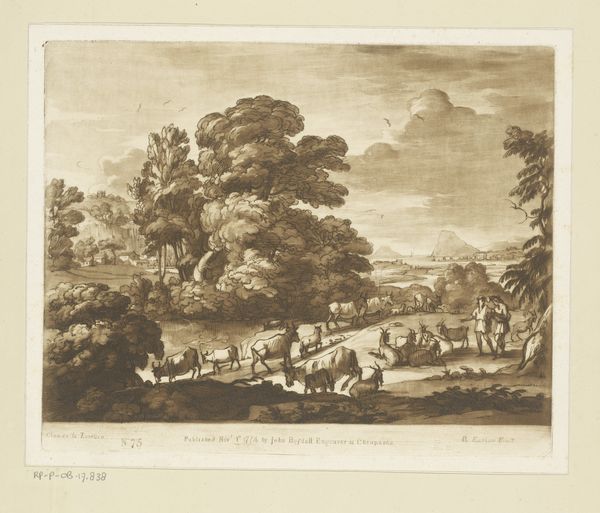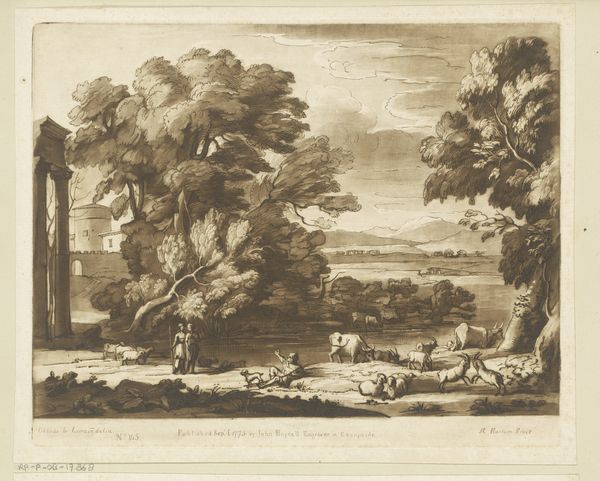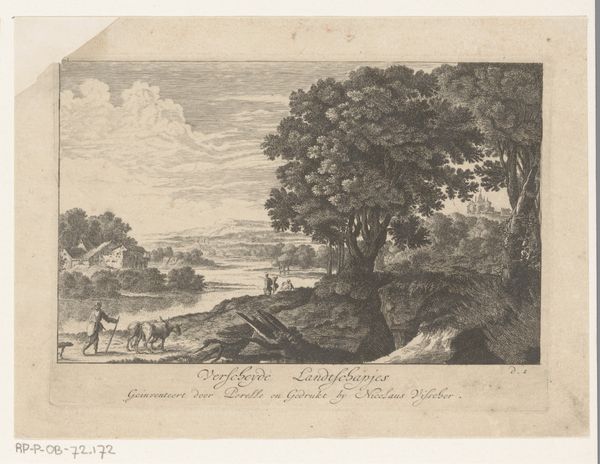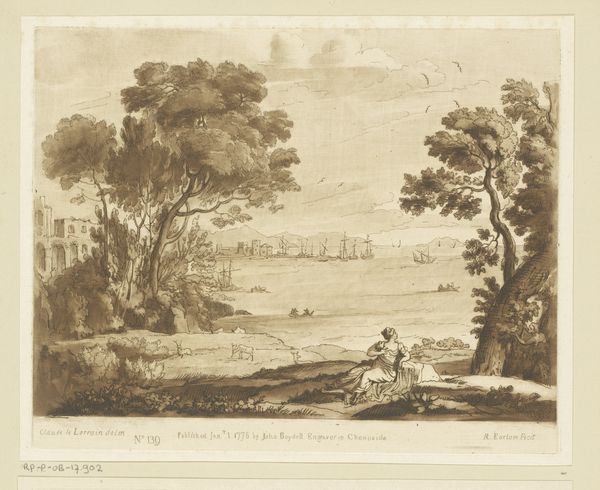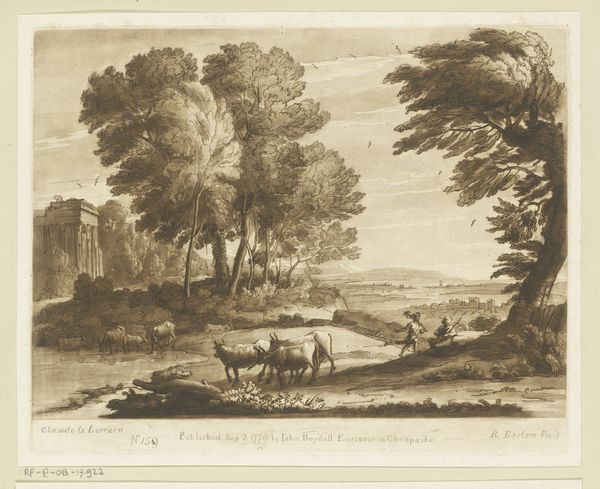
Dimensions: height 206 mm, width 257 mm
Copyright: Rijks Museum: Open Domain
Curator: Richard Earlom’s “Landscape with Philip Baptizing the Eunuch,” possibly from 1777 and housed here at the Rijksmuseum, immediately strikes me. The tonality gives a sense of age and antiquity, while the engraving offers a classical, pastoral scene. What do you make of it? Editor: My immediate reaction is that it’s incredibly exclusionary. We have a scene of conversion—a demonstration of power dynamics. The visual language subtly reinforces historical hierarchies related to religious authority, as well as racial undertones. It also essentializes the eunuch's identity within a very specific biblical context. Curator: The composition invites close visual reading, certainly. Notice how Earlom structures the scene: a landscape divided, essentially, into three horizontal registers, from the foreground figures, the middle ground showing an approaching carriage, to the distant landscape and sky, achieving a certain depth. This deliberate structuring asks us to consider relationships between elements. Editor: I agree. But by dividing it in this way, it separates the figures undergoing baptism from the approaching elite. We're confronted with how power circulates, visualized through movement. Curator: Can we move beyond immediate reactions to consider this from a perspective informed by artistic intentions? What message can you extract from the artistic presentation, rather than solely considering cultural baggage that comes with its theme? Editor: But form follows content. We cannot divorce them. The hazy effect does not merely render depth and atmosphere. It romanticizes a moment of subjugation, veiling an uneven transaction. The figures may be in harmony with the land, yet the baptism becomes symbolic of a new form of societal binding and ideological compliance. The conversion acts as a means of co-opting identity into a colonial agenda. Curator: So, in summary, what you’re advocating for is a lens of scrutiny that unpicks potential injustices latent within the print? It isn't just about technique or visual effect; the image perpetuates power relations of its time. Editor: Precisely. Art never exists in a vacuum; we should unpack these moments.
Comments
No comments
Be the first to comment and join the conversation on the ultimate creative platform.
